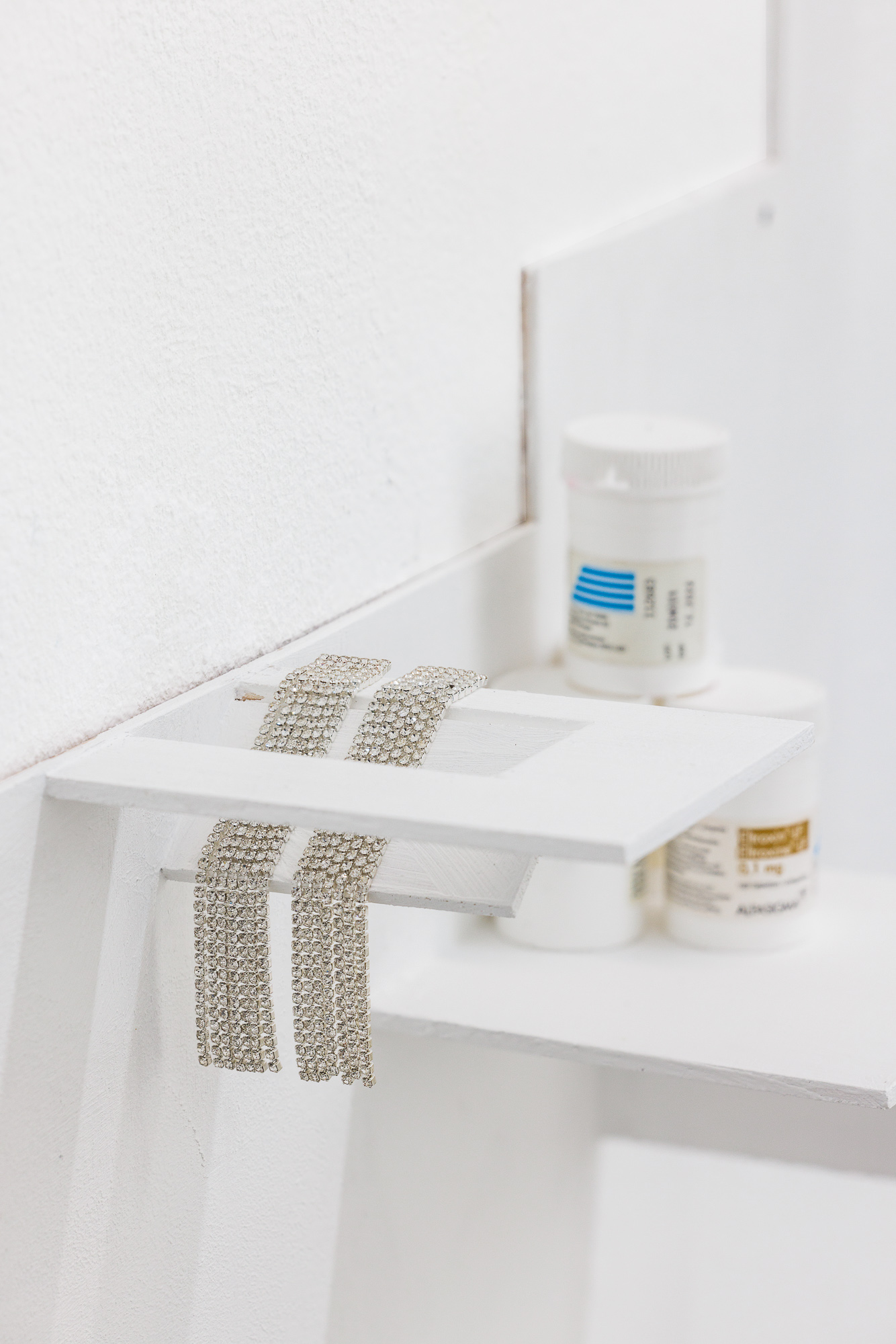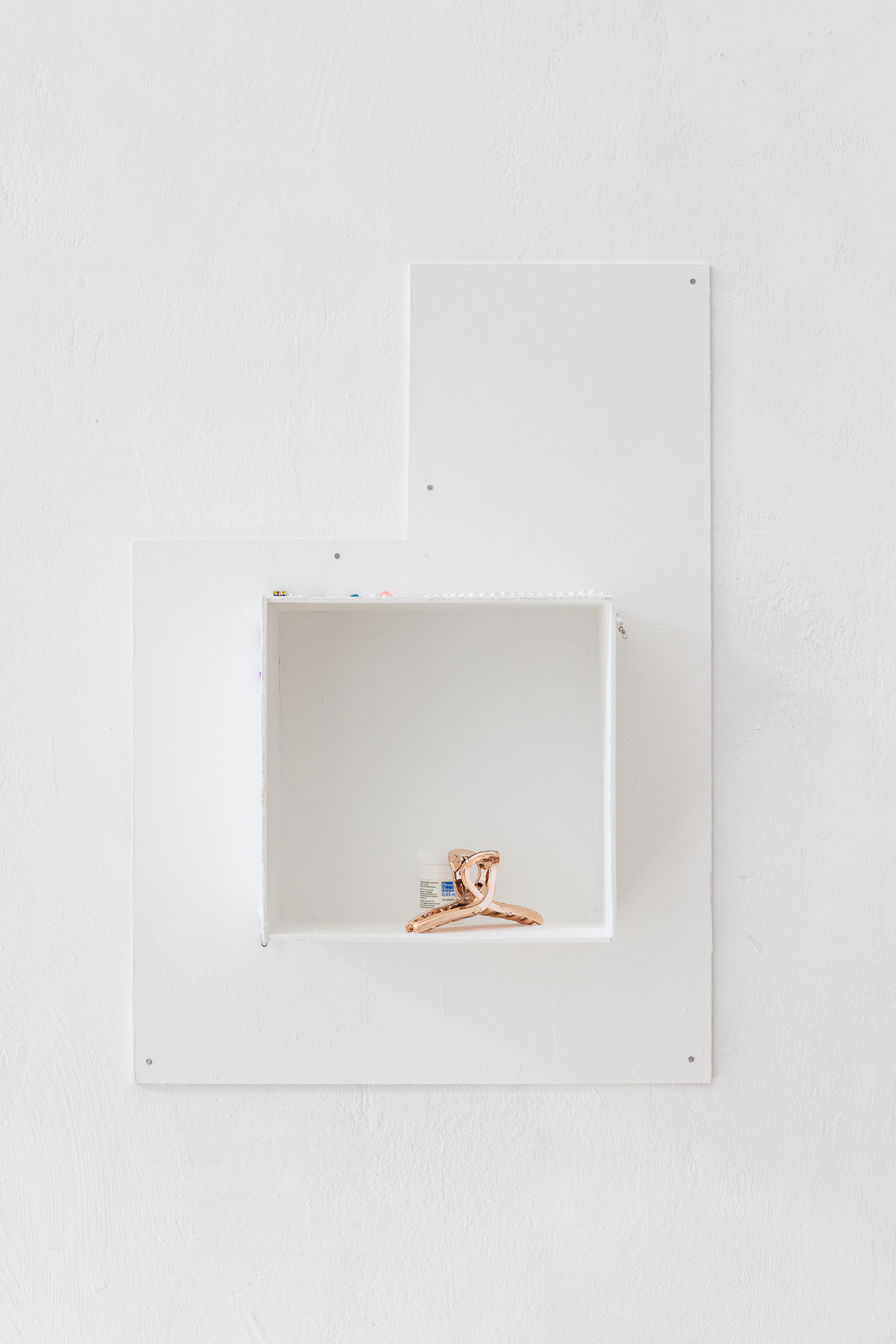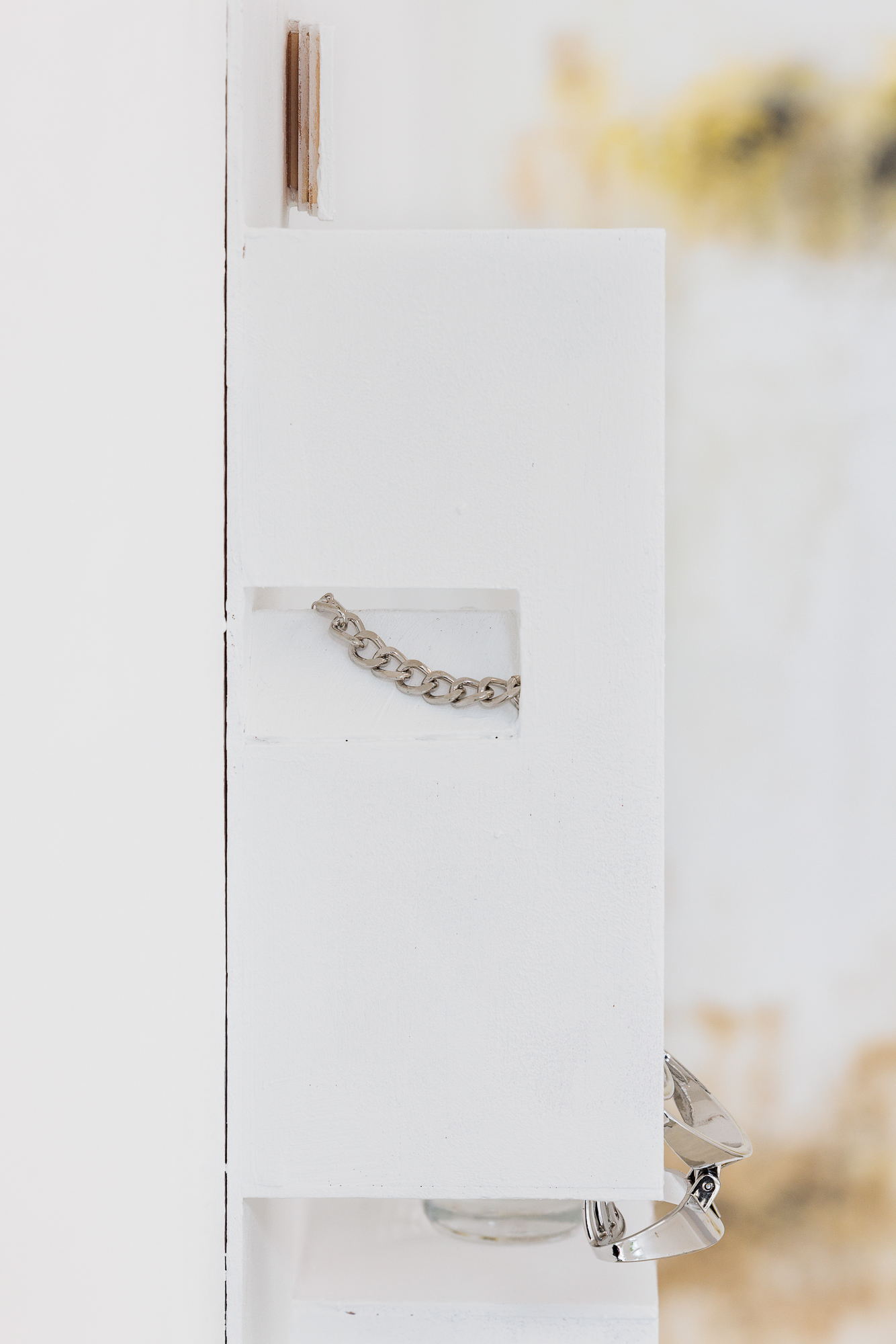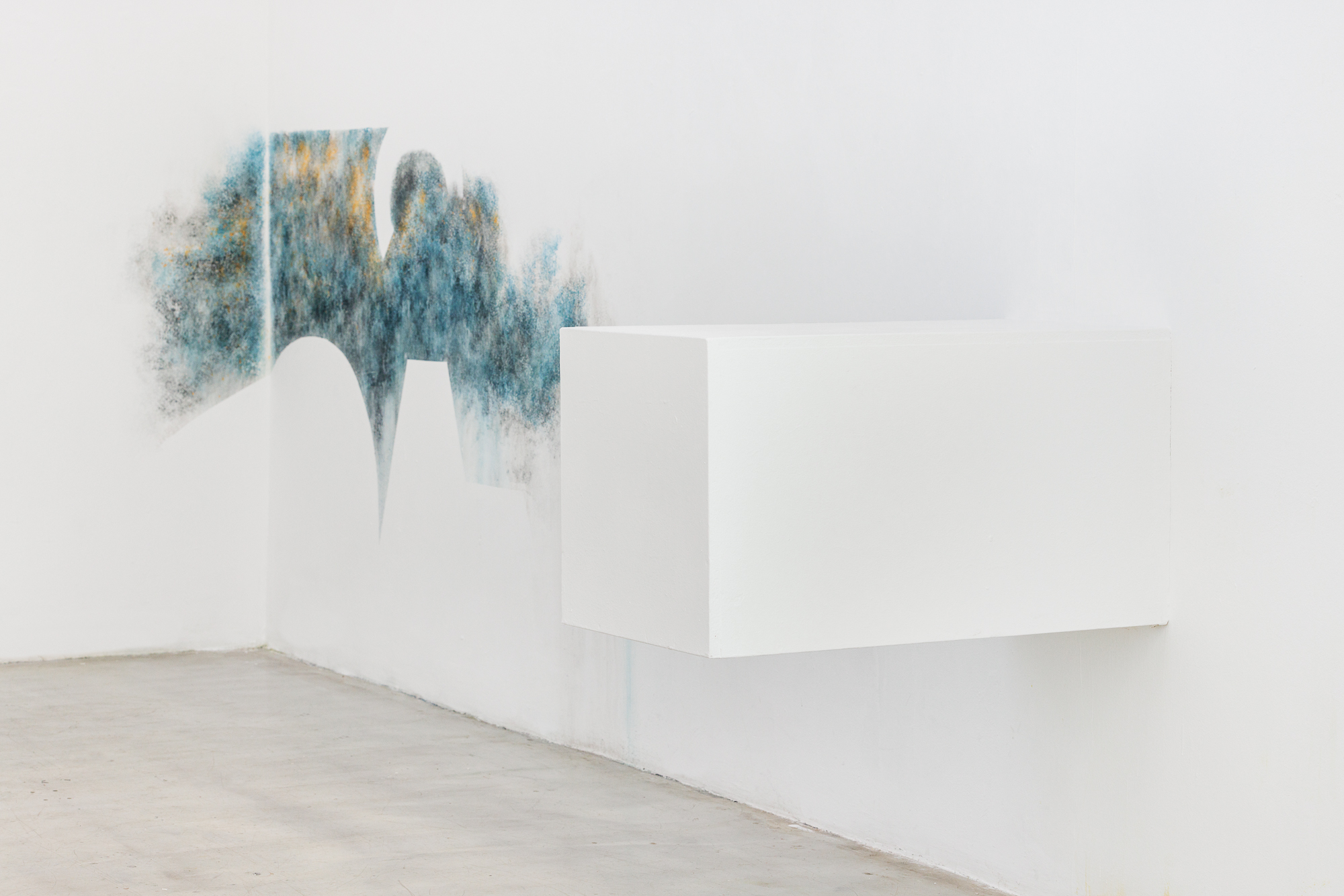
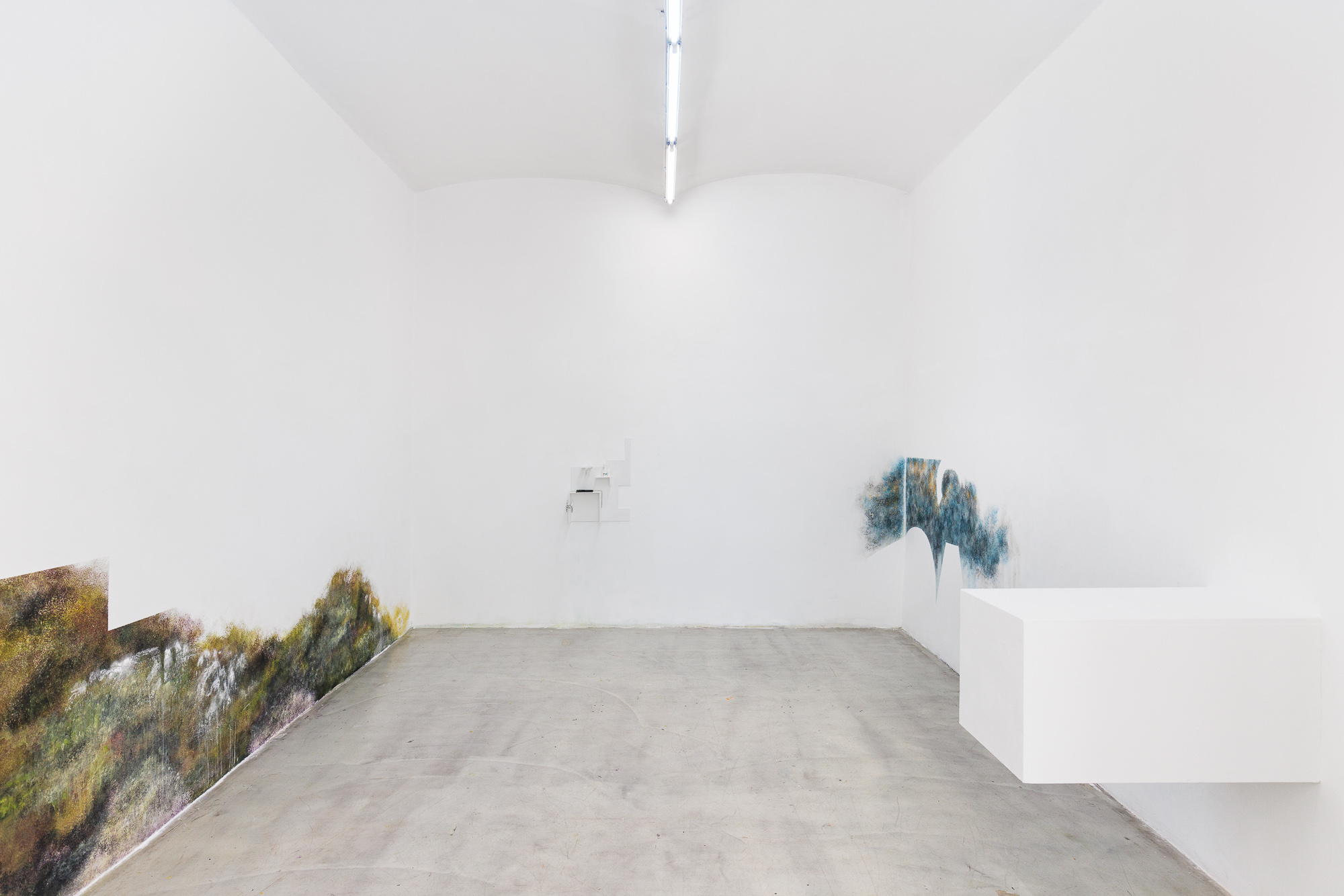
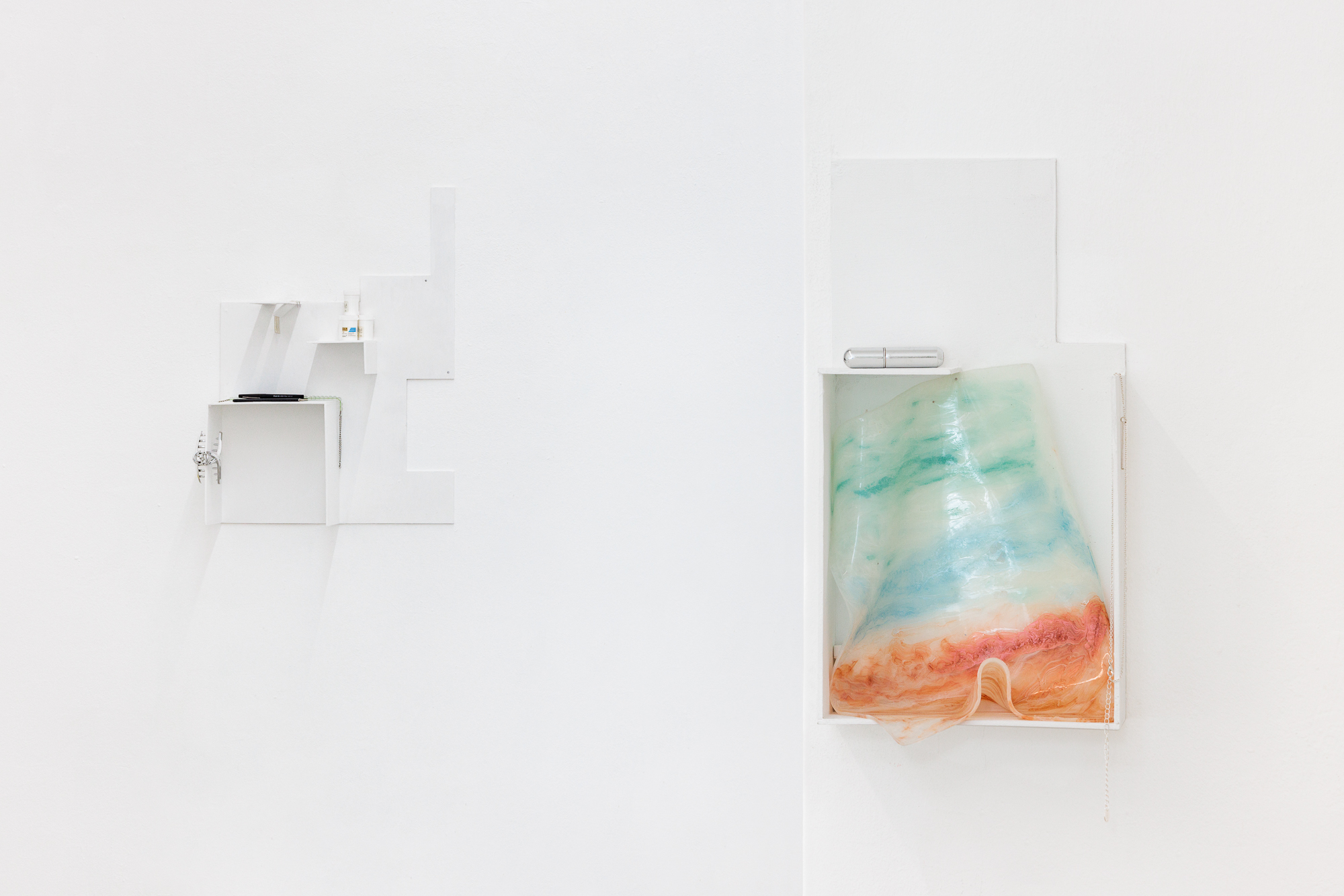

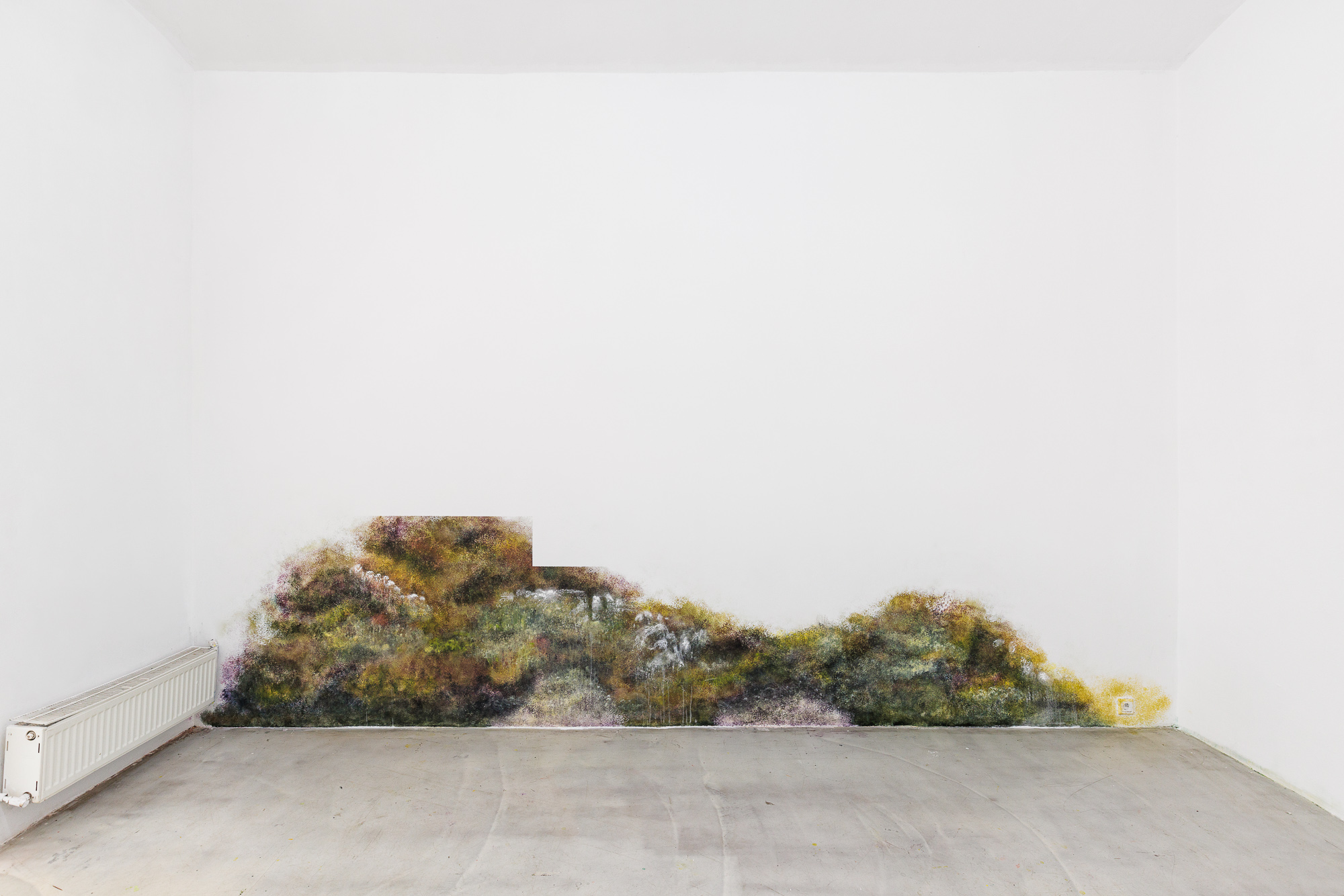




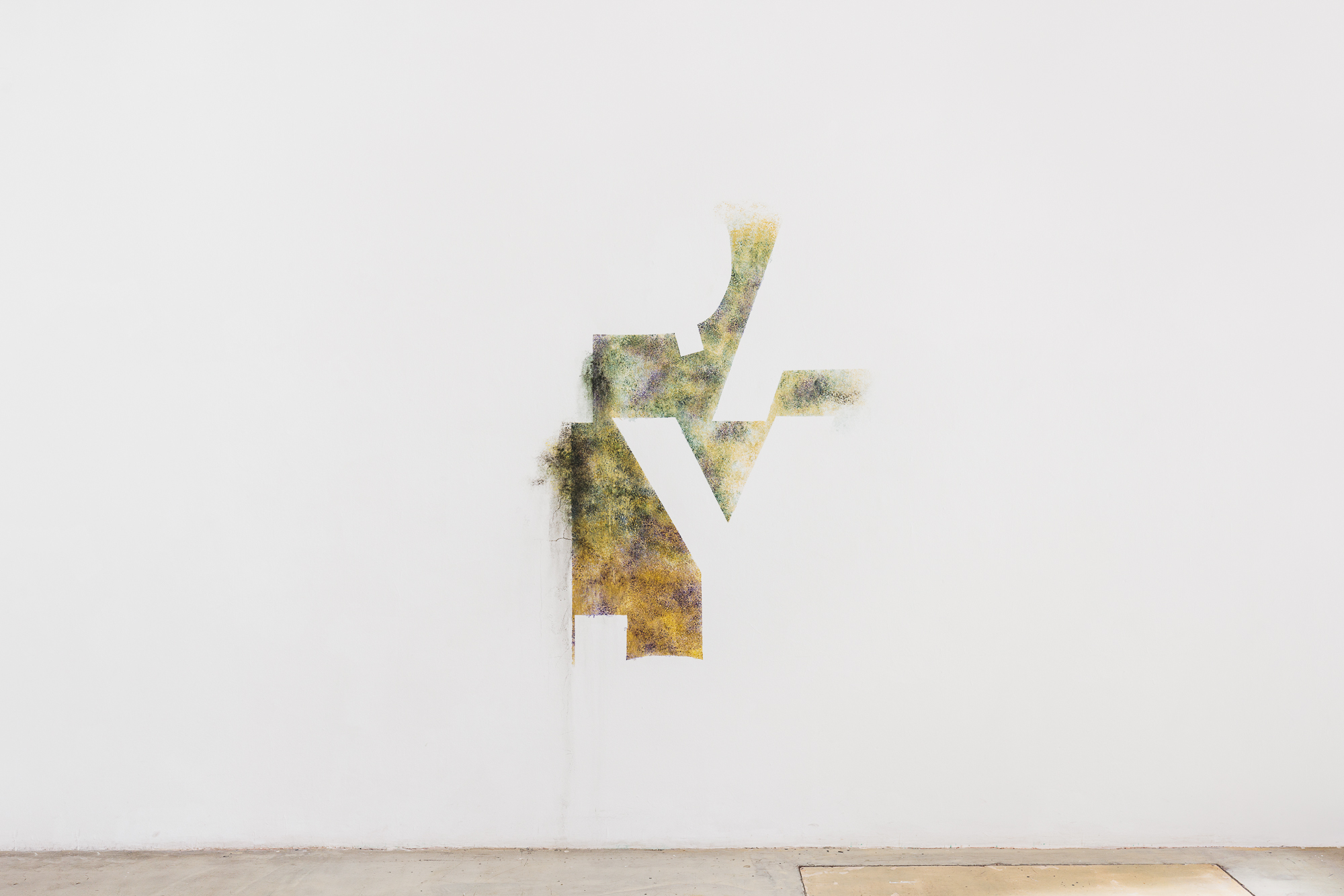
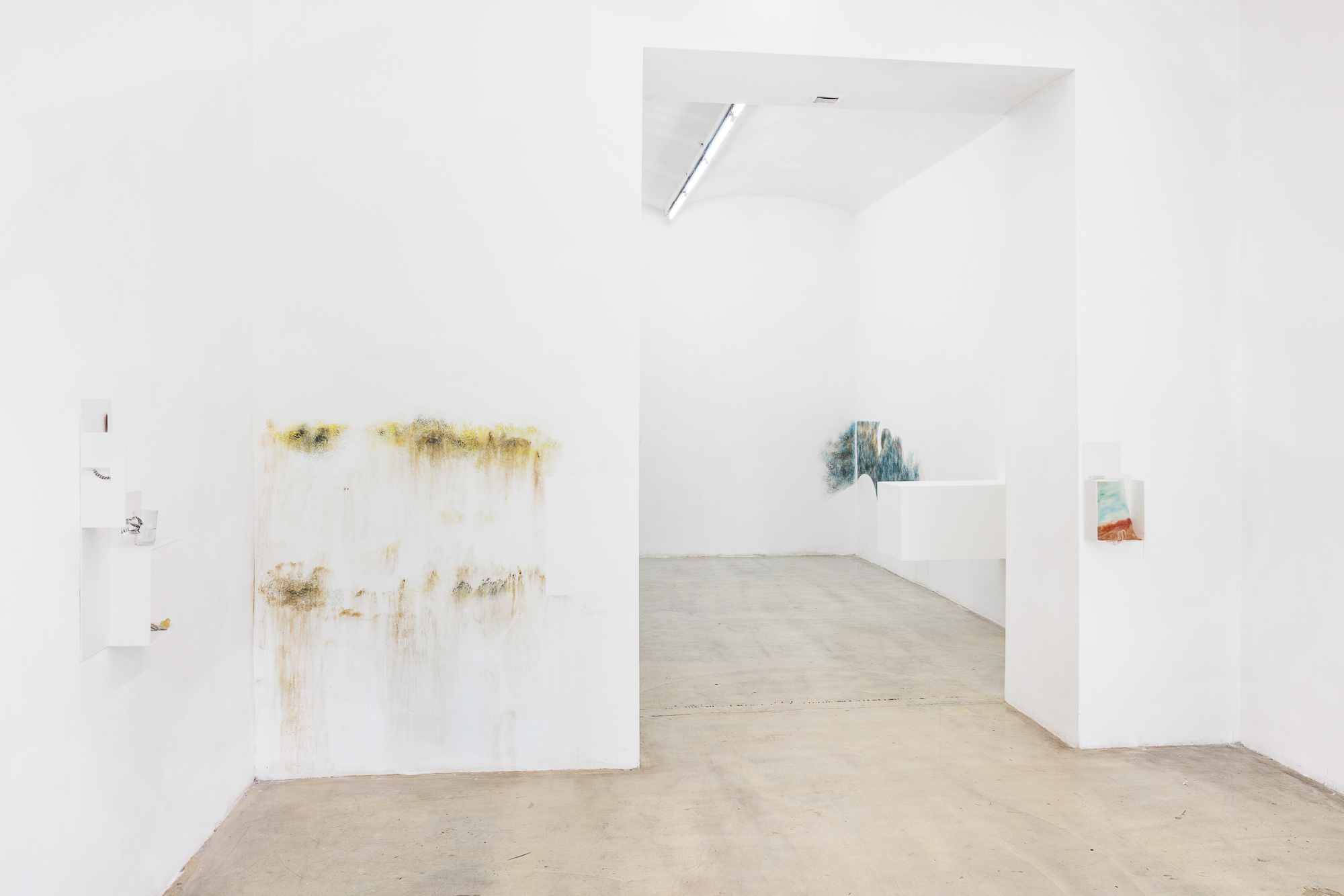


Ebb and Flow, WAF Galerie, Vienna, 2023
“Ebb and Flow,” a solo presentation by Zurich-based artist Ceylan Öztrük questions the materiality of mould by toying with the possibilities of conceptual versus figurative painting, and through a series of wall-mounted dioramas and structures, explores overlapping personal and architectural sentiments.
Mould is classifiably abject. A splotchy, harbinger of decay. A “volatile, organic compound” which stains where it grows and poisons innocents.[1] Öztrük is apparently flippant with regard toward these universally negative associations, as her paintings of rot upset the theory posited by psychoanalyst Julia Kristeva, that “it is thus not lack of cleanliness or health that causes abjection but what disturbs identity, system, order. What does not respect borders, positions, rules.”[2]Though wantonly dirtying the white walls, encroaching even onto power outlets and seeming to drip carelessly, the naturalistic effect of the trompe l’oeil, blooming “mould paintings” (Mold Work III, 2023) however, is disrupted with the imposition of an indecipherable order. Letter-shaped absences sharply delineate the swathes of earthen tones, becoming like a kind of existential writing which peters in and out of legibility. Approaching the notion of “gaps” as a sculptural proposition, and harkening to Brian O’Doherty’s seminal ruminations on the devaluation, contradictions, and exploitative potential of artistic work, as well as on the many kinds of “space” in his seminal text Inside the White Cube: The Ideology of the Gallery Space (1976), Öztrük’s site-specific anti-murals invoke uninstitutionalised space in reality.
Just as mould infestations (or paintings) disrupt the sanctity of the domestic interior, the series of wall-mounted dioramas and horizontally jutting white plinths dotted between the colour fields contain the liminal, parallel notions of construction and deconstruction. Like exploded miniature living spaces, the sculptural models (Room Model, 2023) are inspired by memories of childhood bedrooms and function doubly like bedside shelves, scattered with the personal effects of the artist: Plastic claw clips, a palm-sized mirror, a half-drunk glass of water, various earrings and necklaces with rhinestones and beads, a notebook, a flat dildo (one of previous silicone works of the artist) and empty Eltroxine bottles are among the items placed and draped over the available surfaces and corners of the model rooms.
Just as with the “mould paintings,” in which Öztrük plants undecipherable lettered secrets, the model rooms—some even replete with miniature staircases are like open-face vitrines which, in spite of the inclusion of highly specific personal items (the artist was prescribed the synthetic life-long hormone replacement Eltroxine following the removal of her thyroid in 2021), retain a degree of anonymity through their origins as blank, schematic objects.
The prototypical idiom “ebb and flow” denotes a pattern of inevitable reoccurrences: growth and decay, construction and reconstruction, overfamiliarity and estrangement, et cetera. In assimilating these oppositional phenomena through painting and sculpture, Öztrük demonstrates her aptitude for figuration and abstraction across imagic, linguistic, and conceptual planes.
Text by Olamiju Fajemisin
